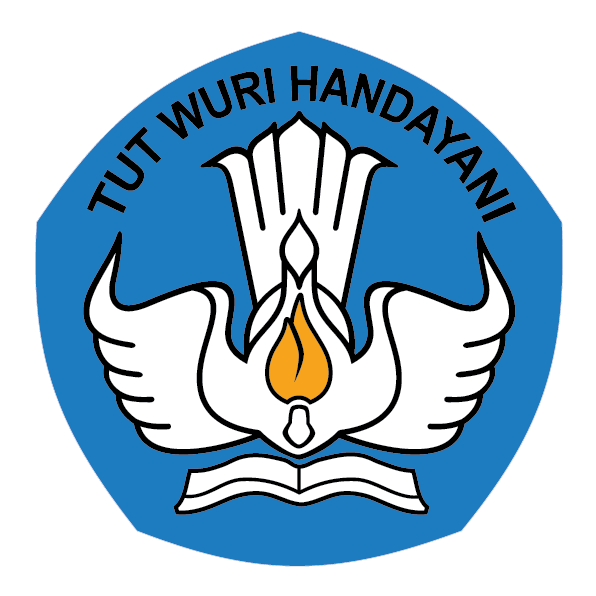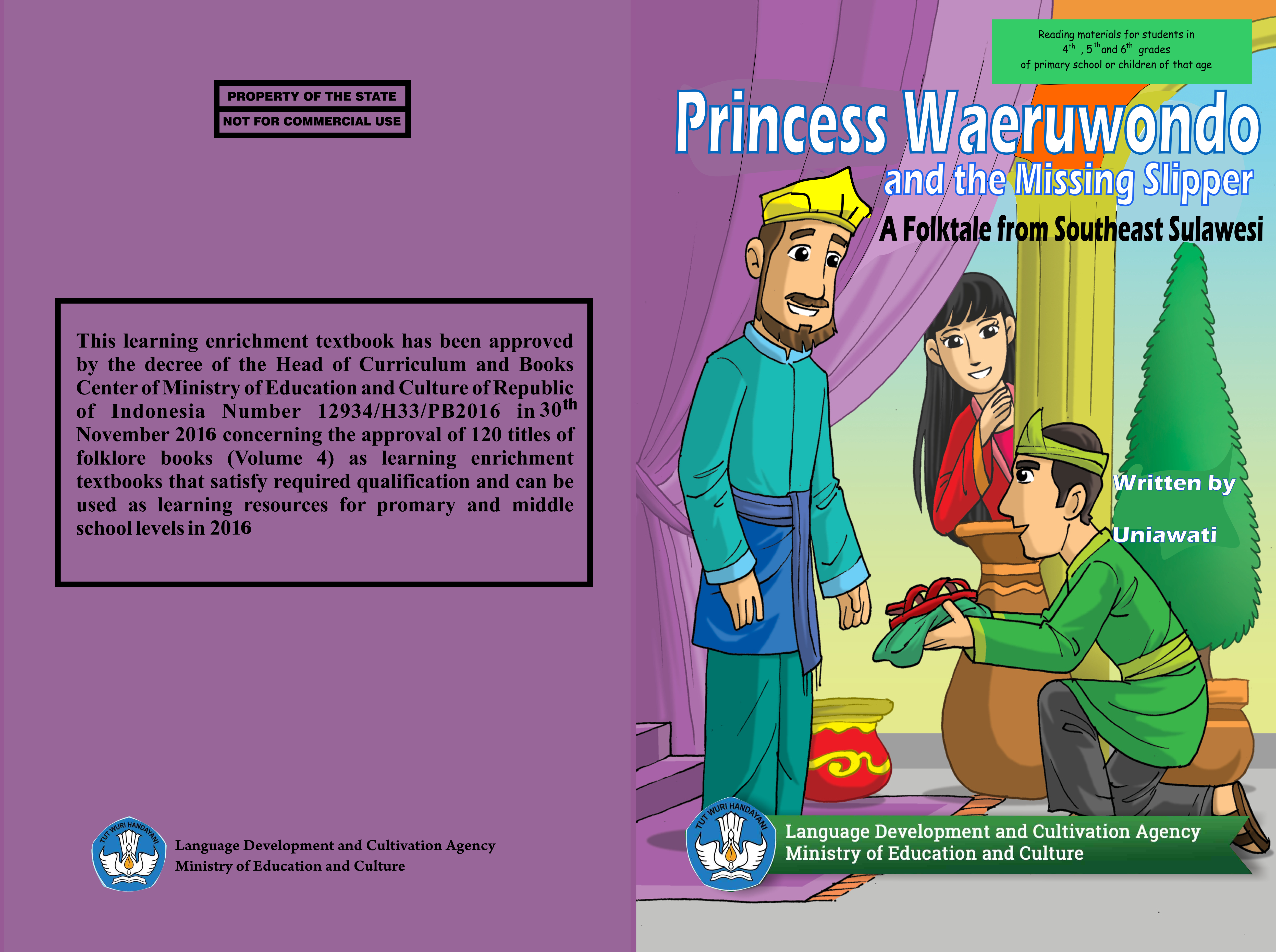
Tags
PRINCESS WAERUWONDO AND THE MISSING SLIPPER
Content Language : English

PRINCESS WAERUWONDO AND THE MISSING SLIPPER
Translated from
Putri Waeruwondo dan Sepatu yang Hilang
written by Uniawati
published by
Language Development and Cultivation Agency
Ministry of Education and Culture
in 2016
This translation has been published as the result of the translation program organized
by The Center for Language Strategy and Diplomacy Development,
Language Development and Cultivation Agency, Ministry of Education and Culture
in 2018
All rights reserved.
Copyrights of the original book and the translation belong to
Language Development and Cultivation Agency,
Ministry of Education and Culture, Republic of Indonesia.
Language Development and Cultivation Agency
Ministry of Education and Culture, Republic of Indonesia
Jalan Daksinapati Barat IV, Rawamangun, Jakarta
Telepon (021) 4706287, 4706288, 4896558, 4894546
Pos-el: [email protected]
www.badanbahasa.kemdikbud.go.id
---------------------------------------------------------------------------------------------------------------------------
The life of oral literature in folklore genre in Southeast
Sulawesi can be said to grow and develop in the middle of its
speaking community. This is indicated by the many folklore
found in the community while the author was literary mapping.
However, the signicant growth of the story does not guarantee its
preservation because there are major obstacles in terms of how
the stories are inherited. Not all future generations have great
attention and concern for the preservation of folklore, so this
needs to be taken seriously in order to save the cultural heritage.
One way is through story writing which is adopted from folklore.
The story of Princess Waeruwondo and the Missing
Slipper was adopted from the folklore of North Buton, Southeast
Sulawesi, which was told by Mr. Ali Nurdin. This story is full of
character education that is important for children's growth and
development. Nowadays children experience the lacks of reading
materials that are full of character education, increasingly
degraded by the presence of modern-day stories, both through
electronic and printed media even though we are rich in folklore.
The writing of this story is a form of participation in the
preservation of folklore as well as a form of support for the
National Literacy Movement program. The presence of this story
is expected to be able to stimulate and hone the children's reading
power so as to make reading and writing activities a hobby.
Hopefully this effort can add insight into children's literature, and
stimulate children to care about the development of the nation’s
literature.
Hopefully this will be beneficial and happy reading!
Kendari, April 2016
Uniawati

This work is licensed under a Creative Commons Attribution-NonCommercial-NoDerivatives 4.0 International License.
